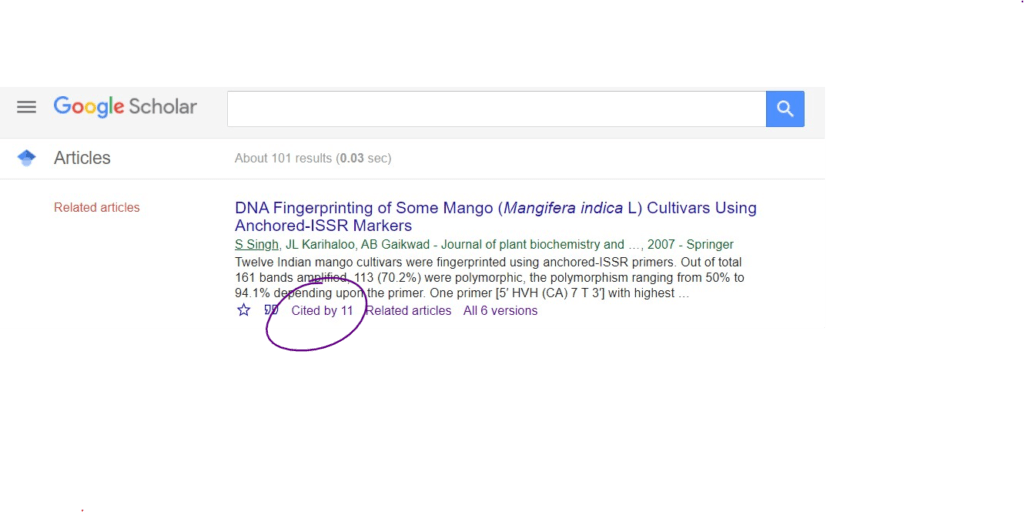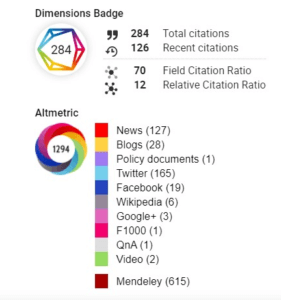
A scientist’s standing in the research community is based largely on the quantity and quality of their publications. Citations are a way to uniquely identify a published work. They consist of standard elements and contain all the information necessary to identify and track publications. The style of citations in the text and the reference list may differ depending on what is being cited (journal article, book, website, etc.) and which style is used to format them (APA, ACS, etc.). Formatting citations and reference lists can be tedious, but citation software like Endnote, Mendeley, and Zotero can make the process easier.
How can authors find citations?
Broadly, authors can find citations to relevant studies in three ways. First, they can follow references back to other publications citing former studies. Review articles are a great resource for identifying such references. Second, young researchers can consult an expert in the field, who can point them in the direction of important papers. The third route is via citation indexing. Citation indexing makes links between literature published in the past and articles citing these older publications. This also allows one to identify which articles have cited the articles of any particular author or have been cited most frequently.
Science Citation Index (SCI), the first citation index for papers published in academic journals, was introduced by the Institute for Scientific Information (now owned by Clarivate Analytics). SCI Expanded (SCIE) is a larger version, available through online platforms such as the Web of Science (WoS). Another index is Scopus, the largest abstract and citation database of peer-reviewed literature in diverse fields in science and social science. Authors may also explore subject-specific citation indexes such as PubMed.
While WoS and Scopus are available by subscription, freely available options include Google Scholar and CiteSeerX. (Are you curious about how many and which papers have cited a particular paper? This can be checked by clicking on the “Cited by” field in Google Scholar, as shown in Figure 1).

Citation analysis and some important metrics
Citation analysis is the study of the impact and quality of an article, author, journal, or even institution based on the number of times papers or authors have been cited by others. Citation analysis enables a researcher to assess the impact a particular article has had, to find out more about a field or topic, and to quantify a particular author’s impact. Several quantitative indices are available to analyze and compare academic impact, which differ in the way they are calculated and the database they are based on (WoS, Scopus, and Google Scholar).
Author-level metrics
Besides simple measures such as total publications or total citations for an author, the following metrics are popular for obtaining a comprehensive picture of author-level impact.
h-index: The Hirsch index or h-index is defined as the number of papers (h) with a citation number ≥ h. For example, a person with an h-index of 15 has 15 articles with 15 or more citations. Variations of the h-index are as follows.
- i10-index represents the number of publications with at least 10 citations, e.g., for someone with 28 articles with 10 or more citations, the i10-index is 28.
- g-index gives more weight to an author’s highly cited articles. Therefore, the g-index may be greatly influenced by a particularly successful paper.
- h5-index is the h-index for articles published in the last 5 complete years.
- h5-median for a publication is the median number of citations for the articles that make up its h5-index.
Journal-level metrics
Metrics by Clarivate Analytics
- Journal impact factor (IF or JIF) reflects the yearly average number of citations to recent articles published in that journal. These can further be classified as 2-year IF or 5-year IF.
- Eigenfactor score measures the importance of a journal by considering the origin of the incoming citations.
- Article influence score, based on the Eigenfactor, determines the average influence of a journal’s articles over the first five years after publication.
Metrics by Scopus
- CiteScore was intended as an alternative to the JIF.
- Source normalized impact per paper (SNIP) enables direct comparison of journals in different subject fields.
- SCImago journal rank (SJR) accounts for both the number of citations received by a journal and the importance of those journals.
Immediacy index: This is measured by the number of total citations of articles published in a given year divided by the number of total articles published in that year.
Article-level metrics
Article-level metrics (ALMs) can include citation counts and the number of times an article has been downloaded. Recent ALMs aim to measure the research impact of an article in a more meaningful and transparent manner, beyond citations.
Altmetrics: Tools providing article-level alternative metrics based on online sources and algorithms are Altmetric.com, Plum Analytics, ImpactStory, and ALM-PLoS. Altmetric.com uses news and media outlets, publicly visible posts on social media, academic social platforms (Mendeley, F1000), scholarly blogs, and policy documents to search for “mentions.” The Altmetric score of attention is calculated by counting and weighing the value of different types of mentions, depicted by a color-coded Altmetric “donut.” Further, a Dimensions badge, an interactive visualization, showcases citation data for individual publications (see Figure 2).

How can authors increase citations to their work?
Here are some tips for researchers to widen the exposure of their articles and ramp up the likelihood their work being cited.
Submission to indexed journals
For a journal to be successful in current times, it must be indexed in an online academic database. An indexed database contributes to the overall quality of scientific information. Further, download counts are becoming almost as important as citation counts; therefore, submission to an online indexed journal would confer a better chance of increasing exposure versus a print-only journal or one that is not indexed in well-known databases.
Submission to open access journals
Open access (OA) journals are growing in popularity because articles published in such journals are more accessible than ones published in subscription-based journals. In fact, an article published in an OA journal is likely to be cited more often (40–250%, depending on the field) than in a subscription-based journal.
Harnessing the power of social media
A good way to amass citations is by actively promoting one’s research on social media platforms. These platforms include Facebook, Instagram, and Twitter, as well as academic social platforms like LinkedIn, Mendeley, and ResearchGate. Researchers engaging in Twitter activity have been found to be more likely to have their research cited by others.
Publishing on preprint servers
Preprints are gaining popularity across research fields; this practice ensures a researcher’s claim of priority to their work and attracts constructive comments before peer review. However, another advantage is that it might increase Altmetric attention scores and citations for the final published paper.
Forging fruitful collaborations
Academic networks can determine academic success and have an impact on the speed and likelihood of publication in journals. Further, early-career researchers coauthoring papers with highly cited scientists in their field have been found to garner more citations than their peers.
Cite right!
Researchers compete to have their research published in the most prestigious journals for career advancement. Ultimately, a scholar’s citation ranking is an indication of their academic performance. This pressure can lead to citation manipulation. Researchers should steer clear of these practices, including excessive self-citation. Further, it is important that an author should cite an article only if they have read and understood the entire article to avoid misinterpretation. Proper attribution also helps avoid plagiarism; when using another person’s words verbatim, the text should be included in quotation marks, and that study should be cited. It is also important for authors to be aware of citation “pollution,” which refers to citations to articles in fraudulent or predatory journals. It is imperative that researchers manually vet the sources they intend to cite.
An assortment of nuanced metrics can be used to assess impact—for author, journal, or article—and these continue to evolve. Researchers should maximize the use of available citation indexes and follow the tips described to increase their impact in a meaningful, responsible, and ethical manner.



